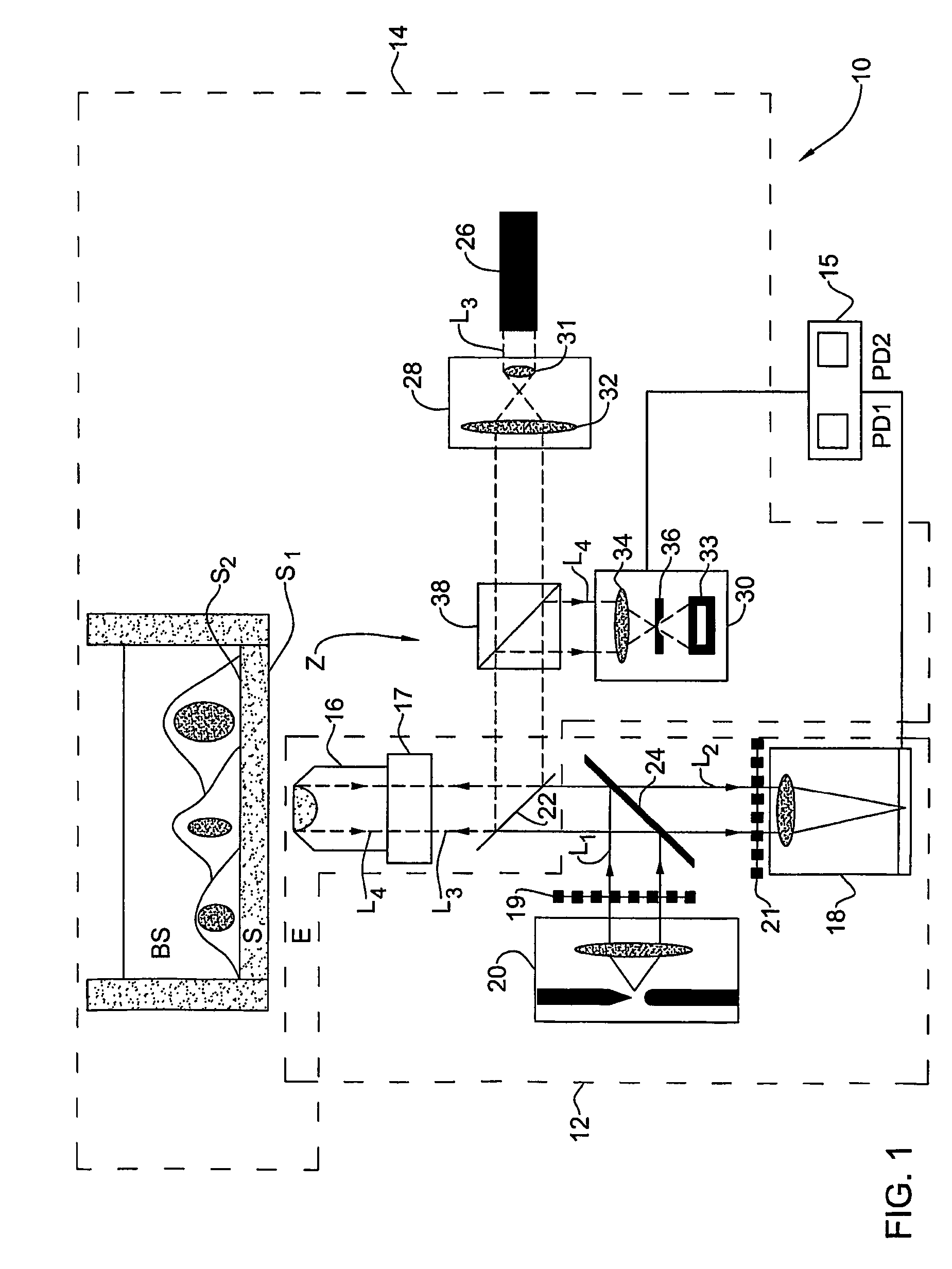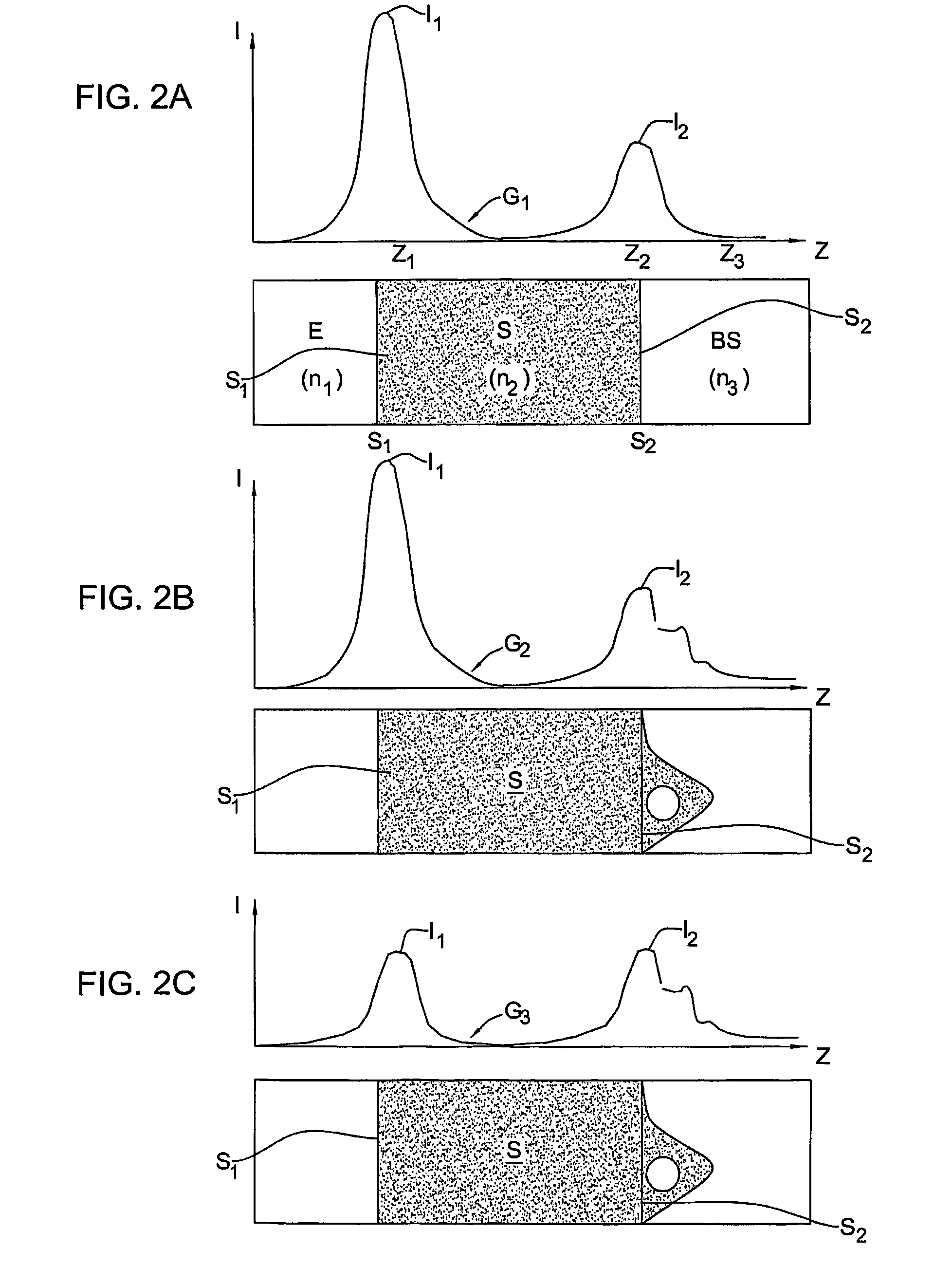Auto-focusing method and device for use with optical microscopy
a technology of optical microscopy and autofocus, which is applied in the direction of optical elements, fluorescence/phosphorescence, instruments, etc., can solve the problems of not preserving intensities, difficult implementation, and not applicable to quantitative fluorescence microscopy applications, and achieves fast autofocus techniques, easy identification, and the effect of avoiding bleaching or photo-damage of samples
- Summary
- Abstract
- Description
- Claims
- Application Information
AI Technical Summary
Benefits of technology
Problems solved by technology
Method used
Image
Examples
Embodiment Construction
[0061]Referring to FIG. 1, there is illustrated an imaging system 10 for acquiring images of a sample, a biological sample BS in the present example. The system comprises such main constructional parts as an imaging device 12 and an auto-focusing device 14 associated with a control unit 15 connectable to the elements of the auto-focusing and imaging devices, as will be described more specifically further below. As shown, the biological sample BS (typically a sample chamber including a buffer layer in which cells are grown) is located on the surface S2 of a substrate S (glass / plastic slide). The system 10 is located at the opposite surface S1 of the substrate. The substrate is supported on a stage (not shown) movable in a plane perpendicular to the Z-axis.
[0062]The control unit 15 comprises a processing utility PD1 operable to process data coming from the auto-focusing device 14 to generate a focusing signal indicative of the in-focus position of the sample-carrying surface for actua...
PUM
| Property | Measurement | Unit |
|---|---|---|
| height | aaaaa | aaaaa |
| transparent | aaaaa | aaaaa |
| semi-transparent | aaaaa | aaaaa |
Abstract
Description
Claims
Application Information
 Login to View More
Login to View More - R&D
- Intellectual Property
- Life Sciences
- Materials
- Tech Scout
- Unparalleled Data Quality
- Higher Quality Content
- 60% Fewer Hallucinations
Browse by: Latest US Patents, China's latest patents, Technical Efficacy Thesaurus, Application Domain, Technology Topic, Popular Technical Reports.
© 2025 PatSnap. All rights reserved.Legal|Privacy policy|Modern Slavery Act Transparency Statement|Sitemap|About US| Contact US: help@patsnap.com



